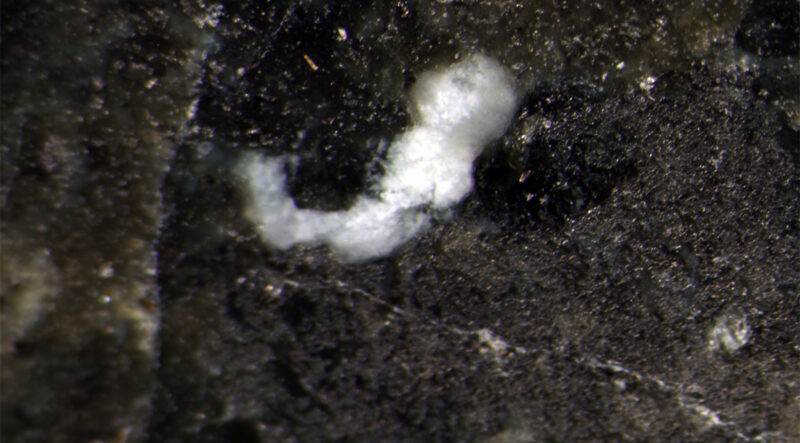Two meteorites that a Sooke, B.C. man discover 60-feet beneath the Pacific Ocean waves have changed his life and stirred up an eddy of excitement with University of Victoria academics.
The two rocks, first considered examples of gabbro and basalt, have been determined to be meteorites and could hold organic elements.
Craig Ebrahimi spent more than a year getting his diving ticket so he could dive to where the ocean was calling him, he said in a June phone call.
He’s reticent to elaborate, but the whole adventure took over a year and the results have been fruitful, if not inexplicable.
“I don’t know if I should tell you the real truth. It was more like I was drawn to it. I never went diving in my life, but something made me want to get my diving ticket,” he admitted. “It was instinct.”
He consulted with several scientists, including engineer Jerzy Sawicki, astrobiologist Chandra Wickramasinghe, before sending it to Dr. Elaine Humphrey, a STEHM technologist at the University of Victoria.
Humphrey performed her tests in October 2018. Her initial reaction was one of mild interest, but nothing more until the results came back.
“I saw it as just an interesting rock,” she said in a June phone call. “It showed a higher iridium content — well trace elements — and it showed tellurium (XPS) peak. More than what is found in a terrestrial rock. But it could have been an overlap with calcite.”
Humphrey further investigated by contacting geology colleagues about the chemical compositions of both gabbro and basaltic meteorites. The rocks are on par with the Allan Hills 84001 meteorite discovered in 1984 in Allan Hills, Antarctica. It was later determined there were fossilized Martian bacteria inside.
“I emailed one of the geologists and said what is the chemical formula of gabbro and he came back with 80 percent silica dioxide and this had less than 50 percent. (The first rock) is still coming back as a meteorite.”
Ebrahimi was excited by the results, which confirmed his hypothesis that the rocks he discovered were meteorites. The next step is to confirm whether there are organic fossils within the meteorites.
“I polished it the and that exposed (more). It would blow your mind if you saw how many things are in it,” he said, adding his theory on how the meteorite collided with the ocean.
Humphrey posits a different theory about the fossils and faces seen in both meteorites, one of pareidolia — or the interpreting of familiar shapes out of patterns.
“All the grains of rock have faces in them. It’s fascinating, but I’m telling you it’s an illusion,” she said. “It’s still an interesting rock, and the more we look at it, the more interesting it gets.”
The next step is passing it along to the scientific community at the next Royal Microscopy meeting in London, as well as obtain the organic test results from an independent laboratory.
As for Ebrahimi, it’s been a study of geology.
“I have read thousands of papers,” he admitted, adding he’s been a guiding force in the study of the rocks. “It will be hard to believe with a guy with no education. Every time some wall comes up, I learned it, moved on.”

